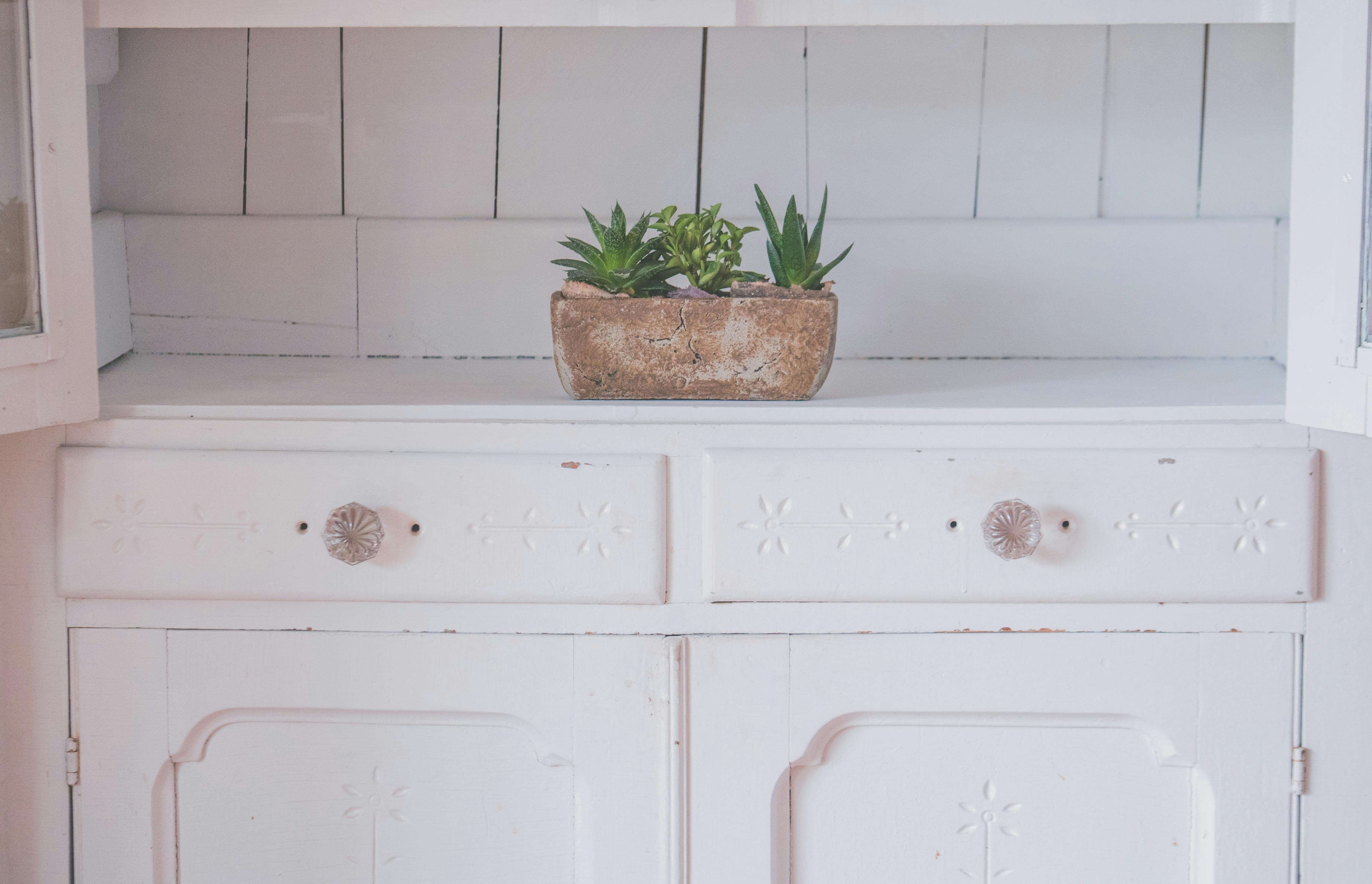If you’ve ever noticed an unpleasant odor coming from your aloe plant, you’re not alone. Many people have experienced the same issue, and it’s important to understand why it happens and what you can do about it. In this article, we’ll explore the potential causes of a stinky aloe plant and provide tips on how to prevent it from happening in the future.
What Does an Aloe Plant Smell Like?
Aloe plants are known for their medicinal properties, but not many people know about their distinct smell. Aloe plants have a mild, earthy scent that is often compared to the smell of a freshly cut grass. The smell is usually faint, but it can be stronger after a rain or when the leaves are crushed. Some people even describe it as a pleasant, citrusy scent.
The reason for this smell is due to the presence of certain chemicals that are found in the aloe plant. These chemicals emit an aroma that helps protect the plant from predators and other environmental stresses. Additionally, these same chemicals are also responsible for some of the medicinal properties of aloe vera, such as its ability to speed up wound healing and reduce inflammation.
The scent of an aloe plant can vary depending on its variety and where it is grown. Some plants may have a stronger or more citrusy odor than others. If you’re looking for a particularly strong scent, you may want to look for varieties that are grown in more tropical climates or those with higher levels of essential oils in their leaves.
Overall, aloe plants have a mild and earthy scent with slight hints of citrusy notes in some varieties. This distinctive scent has been used for centuries to help heal wounds and reduce inflammation, and it can still be found in many modern skincare products today.
Common Reasons for a Stinky Aloe Plant
Aloe plants are popular succulents with healing properties, but they can sometimes become smelly and unpleasant. There are several common reasons why aloe plants may start to smell.
One of the most common causes of an unpleasant smell coming from an aloe plant is root rot. This occurs when the soil is too wet for too long, and the roots begin to rot away. If the soil around your aloe plant is constantly damp, it may be a sign that the plant has root rot.
Another cause of a smelly aloe plant could be fungal or bacterial infections. These can occur if the plant is kept in warm, humid conditions for too long. Fungal and bacterial infections can cause a musty or moldy odor to emanate from the plant.
A third reason why your aloe plant might start to smell is due to pests. Aphids, mealybugs, and other insects can infest an aloe plant and cause it to produce a foul odor. If you notice any strange bugs around your aloe plant, you should take steps to get rid of them as soon as possible.
Finally, if you’re keeping your aloe plant in an area with poor air circulation or high humidity levels, it could be causing the odor as well. The best way to prevent this is by keeping your aloe in a well-ventilated area away from direct sunlight and heat sources.
By identifying the cause of the odor coming from your aloe plant, you will be able to take steps to get rid of it quickly and keep your succulent healthy and strong!
Is a Stinky Aloe Plant Dangerous to Humans?
Aloe plants, generally known for their healing properties, can also be dangerous to humans. While the plant itself is not likely to cause harm, its aroma may be a sign of danger. A stinky aloe plant can be a sign of disease or pest infestation that can spread to other plants in the garden. Taking steps to identify and treat the problem quickly is important for the health of your garden and for avoiding any potential risks.
The most common cause of a stinky aloe plant is fungal disease, specifically Pythium root rot or Fusarium wilt. These diseases can cause yellowing and wilting of leaves, as well as an unpleasant smell. To properly diagnose and treat these diseases, you’ll need to contact your local Cooperative Extension office or a qualified arborist for assistance.
In addition to disease, pest infestations can also cause a stinky aloe plant. Aphids are particularly fond of aloes and can cause stunted growth and yellowing of leaves. If you suspect an aphid infestation in your garden, you should carefully inspect the plants for signs of pests such as sticky residue on leaves or small bugs crawling around the stems. Treating the infestation with an insecticidal soap or horticultural oil should help get rid of any pests quickly and effectively.
Finally, it’s important to remember that aloes need plenty of sun and water in order to thrive. If your plant is not getting enough light or water, it could become stressed and begin emitting an unpleasant odor. Make sure you are providing adequate sunlight and moisture for optimal growth and health of your aloe plants.
Overall, while a stinky aloe plant may not pose an immediate risk to humans, it could indicate underlying problems that need addressing quickly in order to protect your garden from further damage or infection. Contacting a professional if you suspect disease or pest infestation is always recommended for best results.

Preventing Bad Smells from an Aloe Plant
Aloe plants are known for their many benefits, including their ability to naturally reduce inflammation and aid in skin regeneration. However, an aloe plant can sometimes start to smell bad if it is not properly cared for. To prevent your aloe plant from smelling bad, there are a few steps you can take.
The first step is to make sure that your aloe plant is getting enough sunlight. Aloe plants need lots of sunlight to thrive, so make sure that you place it in an area with plenty of natural light. If you don’t have access to natural light, you can use a grow light or artificial sunlight lamp to provide your aloe with the necessary amount of light.
Next, make sure that your aloe plant is not being overwatered. Aloes require very little water and will not tolerate overwatering or sitting in standing water. Overwatering your aloe can cause root rot and also create damp conditions that encourage bacteria growth which can lead to foul odors. To prevent this, only water your aloe when the soil feels dry and never let it sit in standing water.
Finally, be sure to check your aloe regularly for signs of pests or disease. Pests such as mealybugs or aphids can cause a foul odor and should be treated immediately with an appropriate insecticide or pesticide. Additionally, if you notice any discoloration on the leaves of your aloe plant or if it appears wilted or droopy, this could be a sign of disease and should be addressed quickly before it spreads further.
By following these tips and caring for your aloe properly, you’ll be able to keep it smelling fresh and free from bad odors!
Is It Normal for My Aloe Plant to Smell Bad?
It is not unusual for an aloe plant to smell bad. This is due to the natural oils released by the plant as it grows. Some people find this scent unpleasant, while others find it quite pleasant. If your aloe plant has a bad smell, there is no need to worry, as it is perfectly normal. The smell can be caused by bacteria or fungi that have grown on the leaves of the plant. To reduce the bad smell, you can try removing any affected parts of the plant and cleaning them with a mild soap and warm water. It can also help to move the plant away from any source of heat or moisture that could be causing the problem.
If the bad smell persists, then it may be time to repot your aloe plant into fresh soil. This will help to reduce any bacteria or fungi that may have developed in old soil. Furthermore, if you notice any wilted leaves or other signs of stress on your aloe plant, then you should also consider repotting it into fresh soil. Once you have done this, make sure that you are providing your aloe with enough light and water for optimal growth and health.
Signs of an Unhealthy Aloe Plant
Aloe plants are popular succulents that require very little maintenance and can survive in a variety of climates. Despite their forgiving nature, they can still suffer from a number of diseases and issues if not properly cared for. If you notice any of the following signs, your aloe plant may be unhealthy.
The first sign to look out for is discoloration of the leaves. Aloe leaves should be a bright green color, with no yellow or brown spots. If you notice discoloration, this may be a sign of an infestation or disease.
Another sign to look out for is wilting or drooping leaves. This could be caused by either over-watering or under-watering your aloe plant, so check to make sure you’re providing it with the right amount of water.
You should also watch out for any signs of pests such as aphids, mealybugs, or scale insects. These insects can damage the leaves and weaken your aloe plant if not treated quickly.
Finally, watch out for any signs of root rot which can occur if your aloe plant is sitting in waterlogged soil for too long. Root rot can cause stunted growth and yellowing leaves, so it’s important to make sure your aloe is never sitting in soggy soil for too long.
If you notice any of these signs, it’s important to take action quickly in order to save your aloe plant before it’s too late!

Conclusion
Aloe plants can be a great addition to any home, but it’s important to know how to properly care for them. If your aloe plant starts to smell, it could be an indication that something is wrong. It could be due to incorrect watering, too much (or not enough) sunlight, or a pest infestation. By taking the time to diagnose the issue and addressing it, you can ensure your aloe plant remains healthy and doesn’t stink.
Overall, there are many reasons why your aloe plant might start stinking. The key is to take note of the signs that something might be wrong and act accordingly. With proper care and attention, you can keep your aloe plant looking and smelling great!

